This weeks post covers our trip out to Mole Creek, and the stop at Chudleigh on the way. Mole Creek is about a 1 hour drive (75km) from Launceston, and is the nearest village to one of Tasmania’s bigger karst areas. It is also an historic little village that used to be the termination of a branch line on the Tasmanian railways that lasted until the 1980’s.
Mole Creek and the railway
Geography
Mole Creek is village about 75km west of Launceston and 25km west of Deloraine. It is spread out along two roads around a T intersection. The old railway station and the town pub are located towards the western end of the town, and that is where we stopped. With apologies to the rest of Mole Creek, the railway was what I had stopped to photograph.
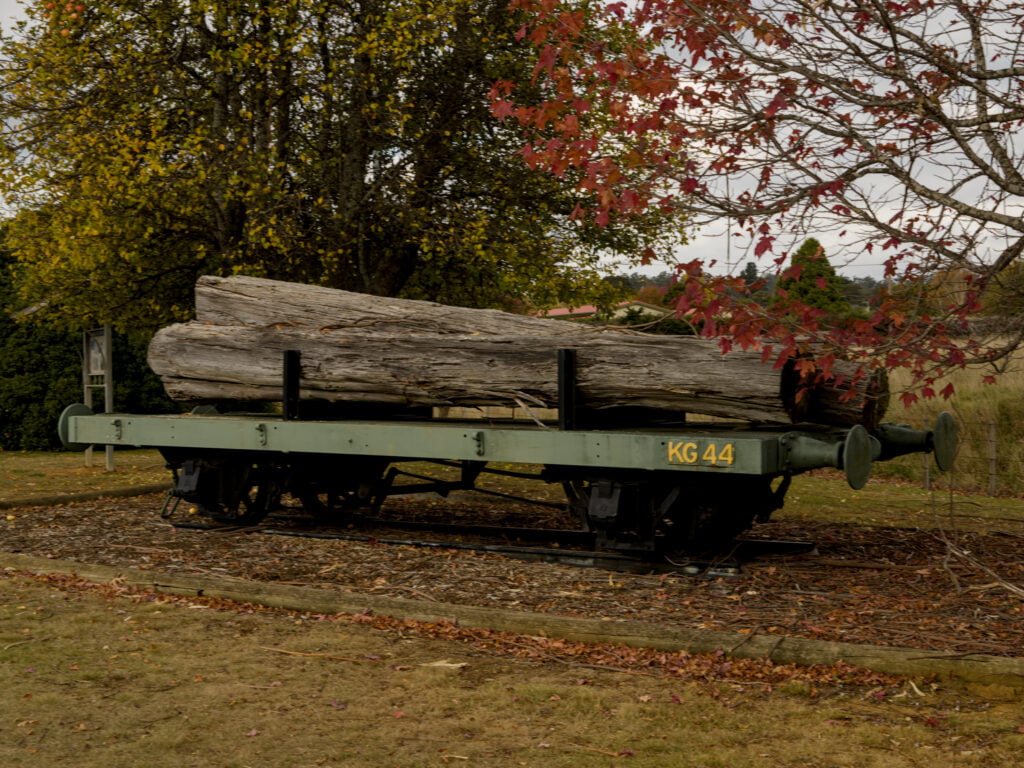
Sony A7Riv with Sony FE 24-70mm F2.8 GM II lens @ 43mm. 1/50s, f/13.0, 160 ISO.
The Railway
Apart from the station and a length of single track, there is basically nothing left of the railway. According to the signage, once upon a time it was a fully fledged terminus, with engine shed, turntable, and yards. No sign of this is visible (from the road side of the fence, anyway). I could imagine where other tracks must have been, and there was the remains of what looked like might have been a goods platform. The track has trees growing through it, and the station appears to be an op-shop for a local charity organisation. There was a working bee going on around the station when I was there so I didn’t go to investigate. That is also why there are no photos of the station – too many people around it!
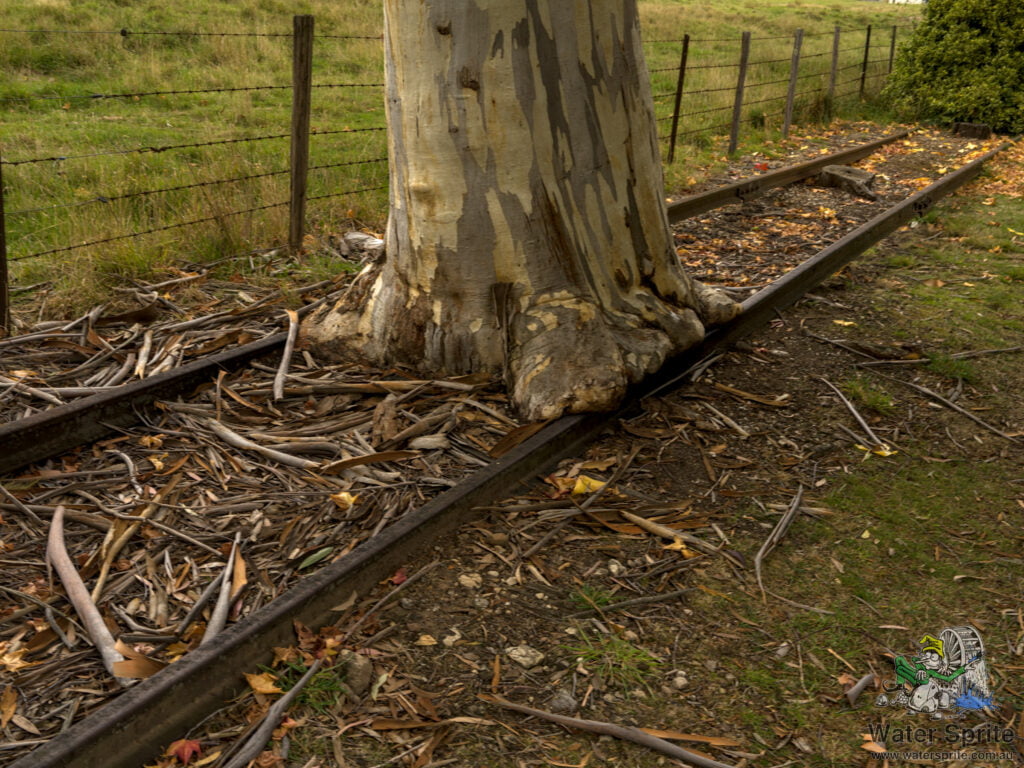
Sony A7Riv with Sony FE 24-70mm F2.8 GM II lens @ 38mm. 1/40s, f/13.0, 250 ISO.
Mountain Huts
Mole Creek (and Chudleigh) seem to have active proponents of the Mountain Huts Preservation Society of Tasmania, with a (relocated) hut in the main street, just up from the railway station. This hut commemorates a local mountain man and prolific hut-builder. There was a notable size trade in furs up until the 1970’s, apparently, and it wasn’t unusual for trappers to go out and catch animals for the fur trade to supplement their incomes. They would build huts to protect themselves from the mountain weather and to dry the furs ready for sale.
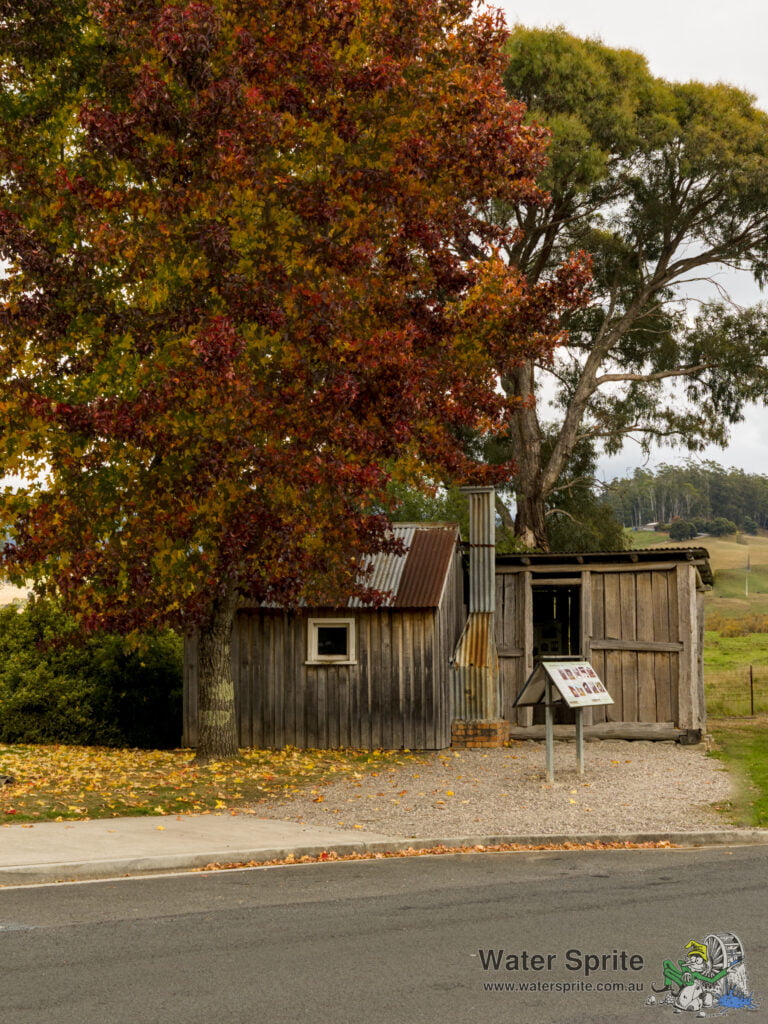
Sony A7Riv with Sony FE 24-70mm F2.8 GM II lens @ 33mm. 1/40s, f/13.0, 125 ISO.

Sony A7Riv with Sony FE 24-70mm F2.8 GM II lens @ 54mm. 1/60s, f/13.0, 100 ISO.
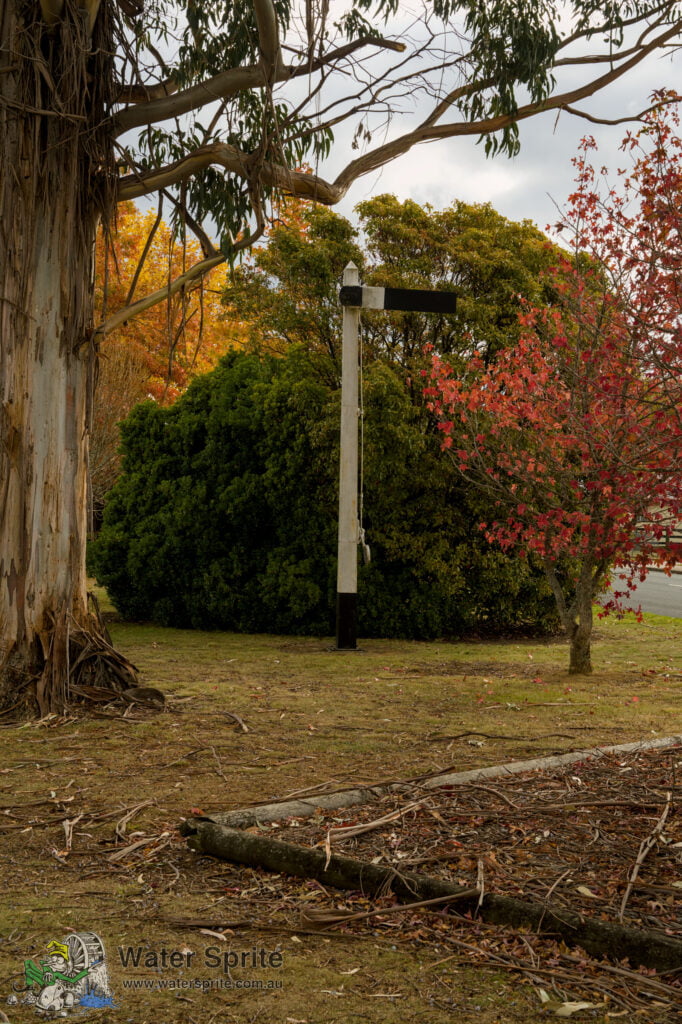
Sony A7Riv with Sony FE 24-70mm F2.8 GM II lens @ 55mm. 1/60s, f/13.0, 320 ISO.
The Mole Creek Caves
There are apparently over 100 known caves in the Mole Creek karst area. Two of them are show caves managed by the Tasmanian National Parks. There are others documented that have restricted access, and a few that look like they are possibly accessible to the public at their own risk. We didn’t go looking for the more adventurous options, choosing to stick with the two show caves. These are the Marakoopa Cave and King Solomon’s Cave.
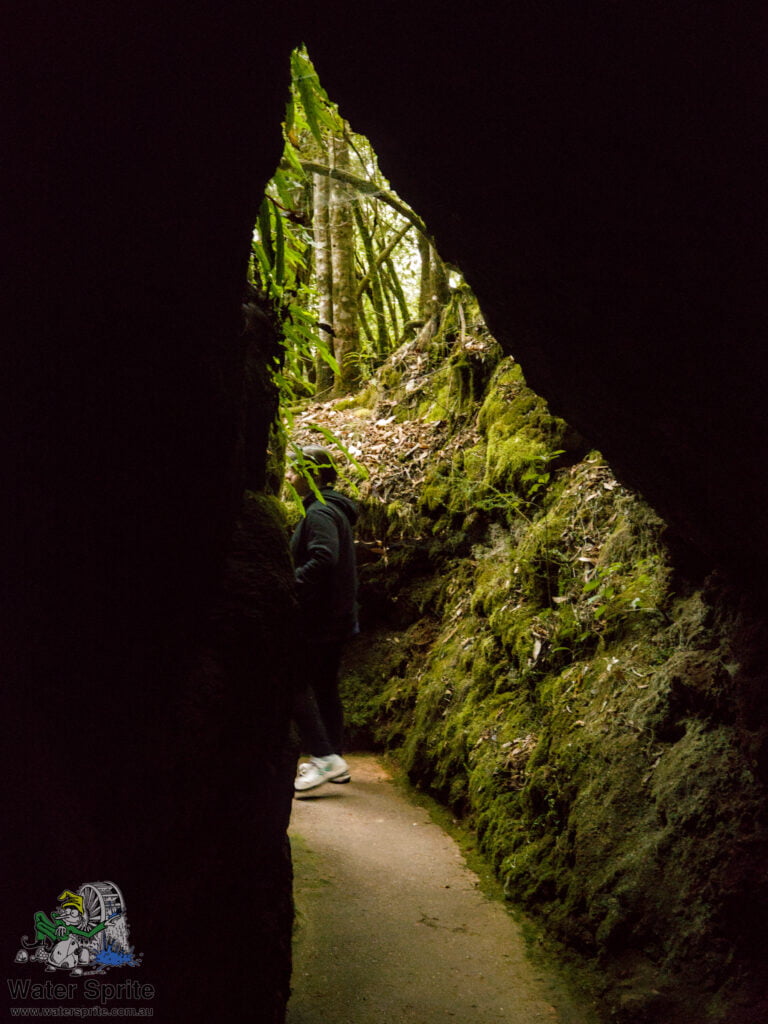
Sony A7Riv with Sony FE 24-70mm F2.8 GM II lens @ 38mm. 1/40s, f/13.0, 12800 ISO.
Both caves run guided tours all year around, for a fee. Tours take approximately an hour. It is not possible to get entry to the caves without a tour. There are, however, short walks at both cave sites which won’t show you any caves but will give you an experience of the countryside.
We did the walk at King Solomon’s, which consists of a wander around a valley with no apparent water flow through it. There are also random dips and hollows – some quite large – on the floor of the valley. Given the amount of rainfall in the area, it was interesting to note that there was no evidence these holes accumulated water. The guides indicated that the whole valley had probably formed through the collapse of a cave system. I guess that even today any water falling or flowing into this valley drops down into the collapsed cave system underneath and ultimately joins whatever stream is down there that originally created the caves.
Links
Tasmanian Parks and Wildlife Service – Mole Creek karst National Park
Marakoopa Cave
Cave Tours
The Marakoopa Cave actually has two different tours. We only had time to do one before driving over to Kings Solomon’s Cave for our tour there. We ended up doing the Cathedral Cave tour. While the information about the walk did say there were many steps, it was not actually at all strenuous. As long as you have sufficient mobility to be able to negotiate steps, you shouldn’t have problems with this tour.
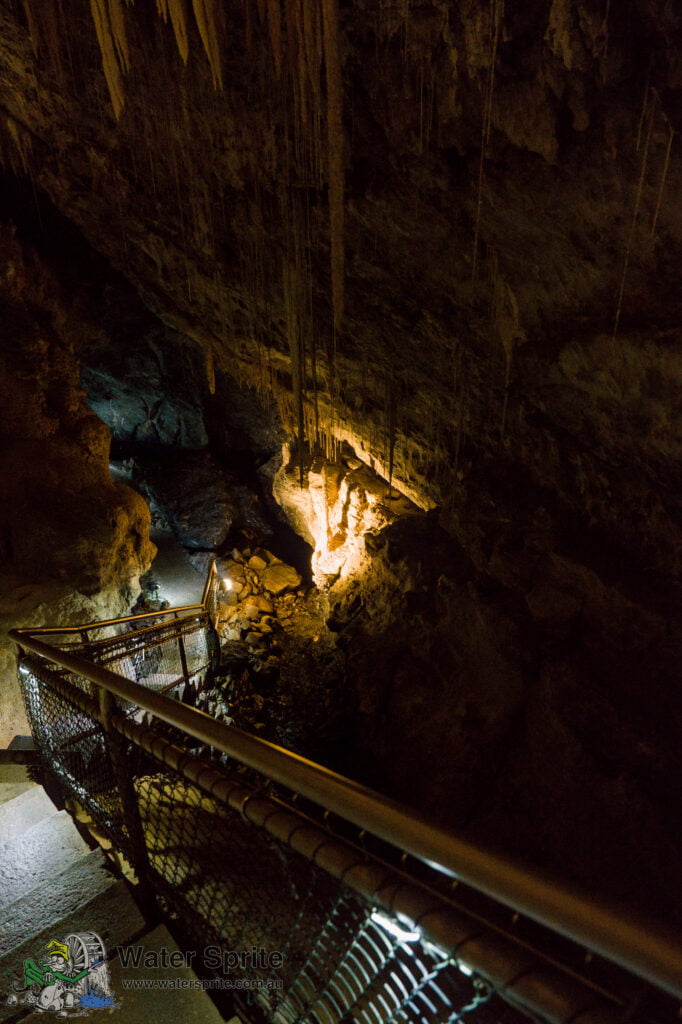
Sony A7Riv with Sony FE 24-70mm F2.8 GM II lens @ 24mm. 1/10s, f/5.0, 16000 ISO.
“Wet” Cave
The Marakoopa Cave complex is what they call a “wet” cave – which isn’t a description of the amount of water that finds its way into the cave creating the formations, but describes the fact that the cave complex has an active stream flowing through it. The Cathedral is one of the higher caverns in the cave complex, however. You enter the cave, and actually spend a fair bit of the walk in going UP. The stream is on the lower levels of the complex, so you don’t see so much of it on this tour, although you do get to walk beside it briefly.
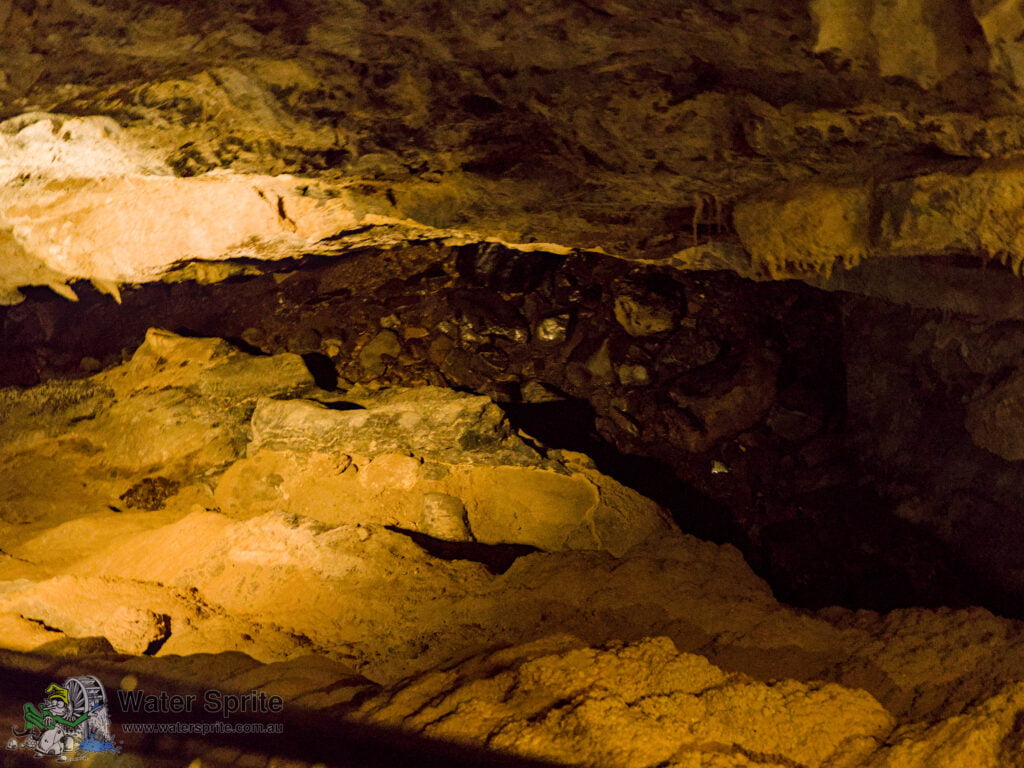
Sony A7Riv with Sony FE 24-70mm F2.8 GM II lens @ 24mm. 1/30s, f/5.0, 1000 ISO.
Photography
As with other show caves, taking of tripods and fancy lighting equipment in on the tour is frowned upon. Tripods are unwieldy and prevent other people moving around on the narrow walkways. Use of flash is permitted (except in the glowworm cave), but please be mindful of other people. If you would like to take such equipment in, check with the Rangers or guides before your tour so you are not disappointed. We hand-held our cameras, and shot without flash.
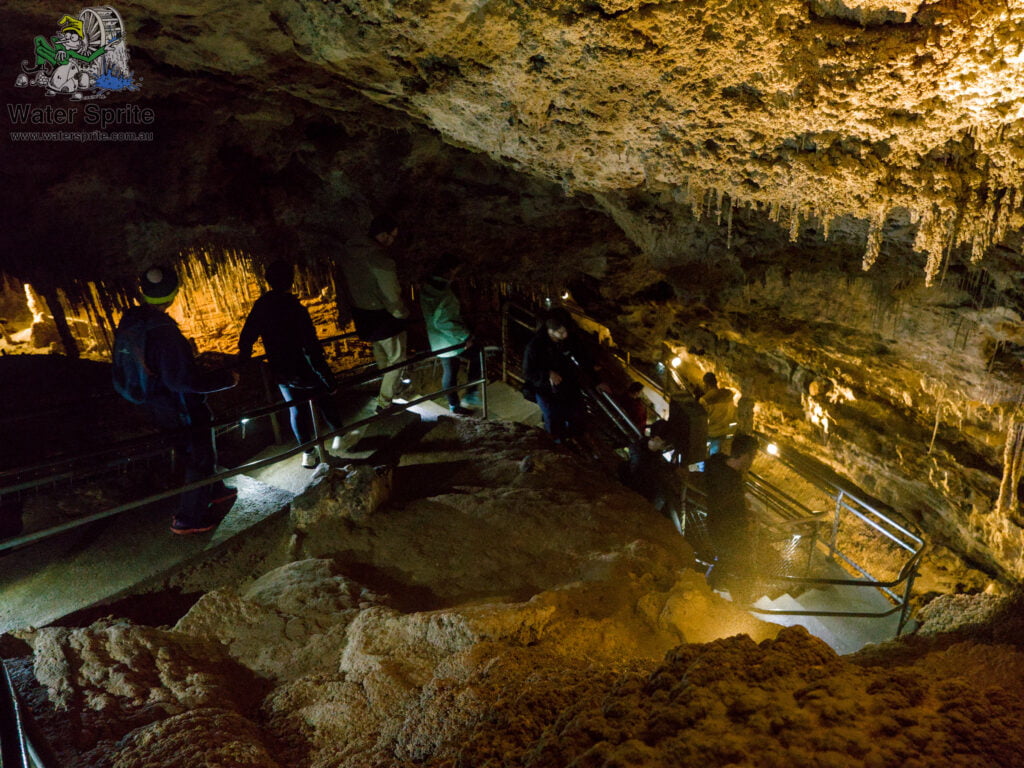
Sony A7Riv with Sony FE 24-70mm F2.8 GM II lens @ 24mm. 1/30s, f/5.0, 1000 ISO.







King Solomon’s Cave
Dry cave
Unlike Marakoopa Cave, King Solomon’s Cave is a “dry” cave. The stream that once upon a time flowed through here and created the caverns has, for whatever reason, diverted to a different course. The cause for that isn’t obvious, and wasn’t mentioned by the guides. It most likely hasn’t flowed through here in the entire time humans have been visiting, however, so that isn’t surprising. It was noticeably less humid and drier underfoot, although there would appear to be water still coming into the caves through the surrounding rock as several of the formations appeared to still have water on them.
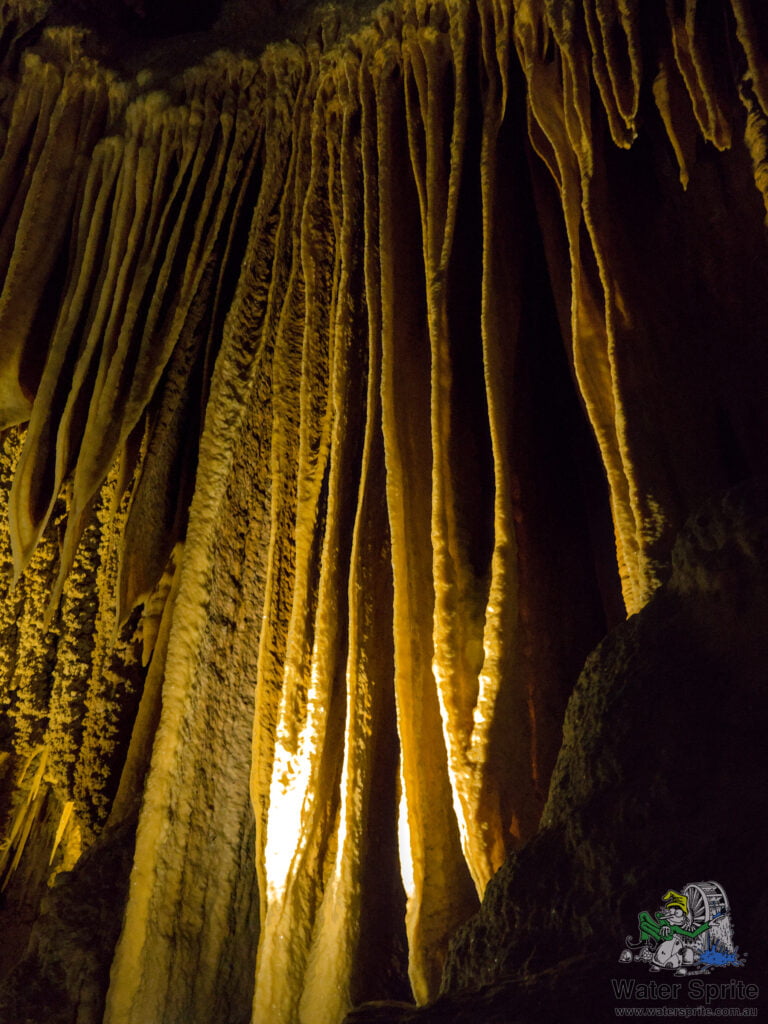
Sony A7Riv with Sony FE 24-70mm F2.8 GM II lens @ 24mm. 1/30s, f/13.0, 5000 ISO.
History
The original entrance to King Solomon’s Cave was via a chimney, requiring a nearly vertical descent into the caves. At some point it was decided that a more convenient access way was required, and a passageway was cut through where the intervening rock was comparatively narrow.
This cave has been a tourist destination for over 100 years, and during that time various means of lighting have been employed. Very early explorers used candles and oil lanterns. This had a detrimental effect of the formations, leaving soot marks. They will, in time, be covered by new growth of the formation, but will leave a sooty discolouration until it is completely buried. Given the pace these things grow at, I would guess that is several hundred years away yet.
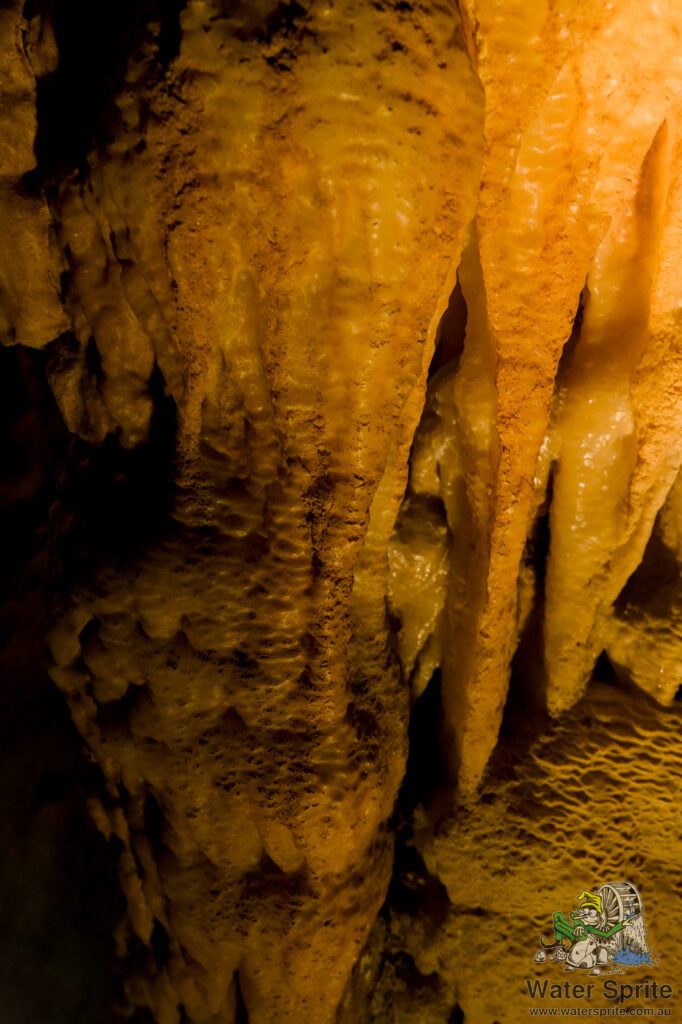
Sony A7Riv with Sony FE 24-70mm F2.8 GM II lens @ 24mm. 1/30s, f/4.5, 800 ISO.
Our guide indicated that an old drum perched up on a shelf at the bottom of the original entrance chimney was the remains of another attempt at lighting the cave. I don’t recall that more details were given as to how it worked, however. Maybe it was a supply point for filling lanterns?
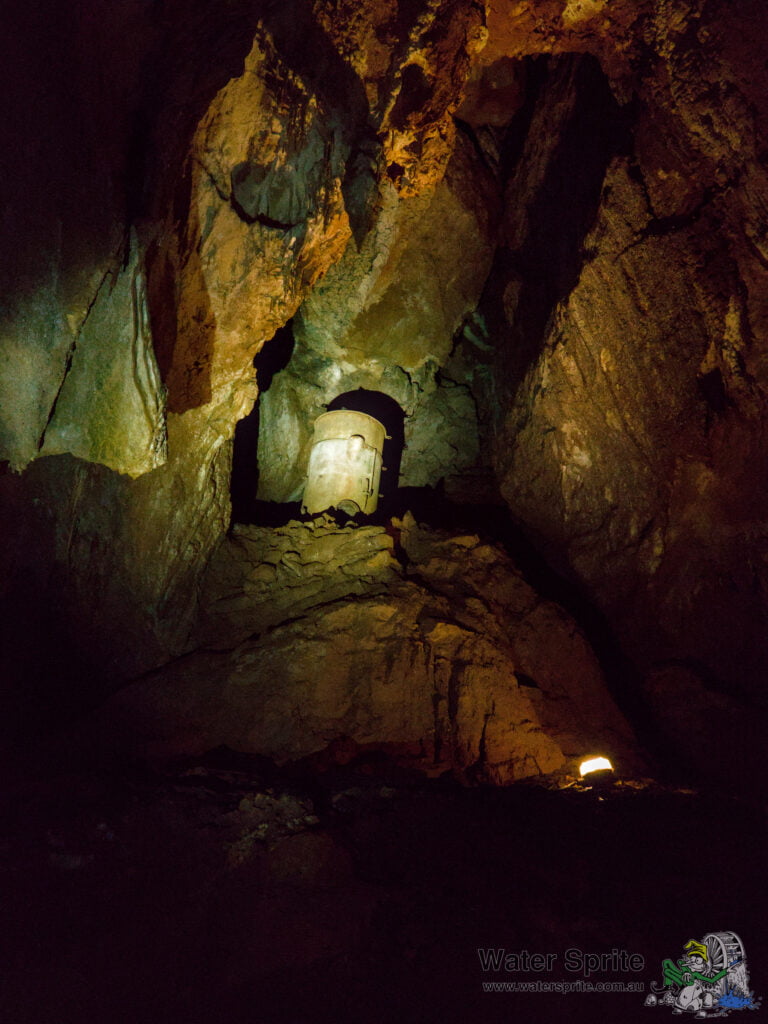
Sony A7Riv with Sony FE 24-70mm F2.8 GM II lens @ 24mm. 1/30s, f/13.0, 12800 ISO.
Cave formations
I thought the colour ranges in King Solomon’s Cave were more striking than we saw in Marakoopa Cave, but perhaps that’s more a feature of how I photographed them. King Solomon’s Cave had some very big and impressive spaces with grand formations. While the Cathedral Cavern in Marakoopa was quite large and impressive, it didn’t have the same degree of formation growth. I will confess, however, that I didn’t take notes on the day, and my memory may be tainted by the fact that we saw King Solomon’s Cave last. Either way, both were well worth the visits.











Chudleigh
Chudleigh is a small village not far from Mole Creek as you head back to Launceston. We hadn’t seen anywhere in Mole Creek that looking interesting as a stopping point for afternoon tea. I had observed on the way out that Chudleigh had a couple of food-type places so we stopped there. The Hearth of Chudleigh is a delightful shop-come-cafe just after you turn into the village main street from the Mole Creek Road, so we stopped there. The delightful lady who runs the place saw us comfortably seated in front of the fireplace before making our hot chocolates. After bringing them over, she came and joined us by the fireplace and chatted for a while. Taking photos in the shop seemed a bit rude, so I didn’t do that. In hindsight I should probably have asked if we could take a photo of her and her shop.
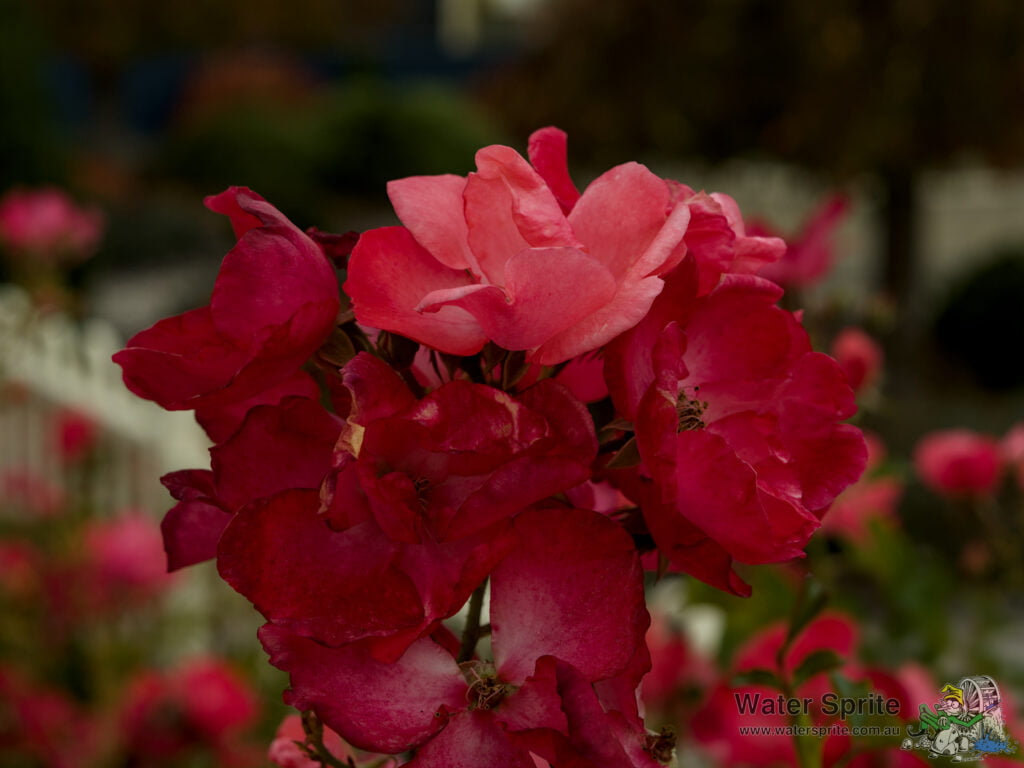
We parked next to the village hall, which sports a playground and another structure honouring the mountain huts. This one was more a picnic shelter and I don’t recall seeing any information to suggest whether it has been relocated there from elsewhere.
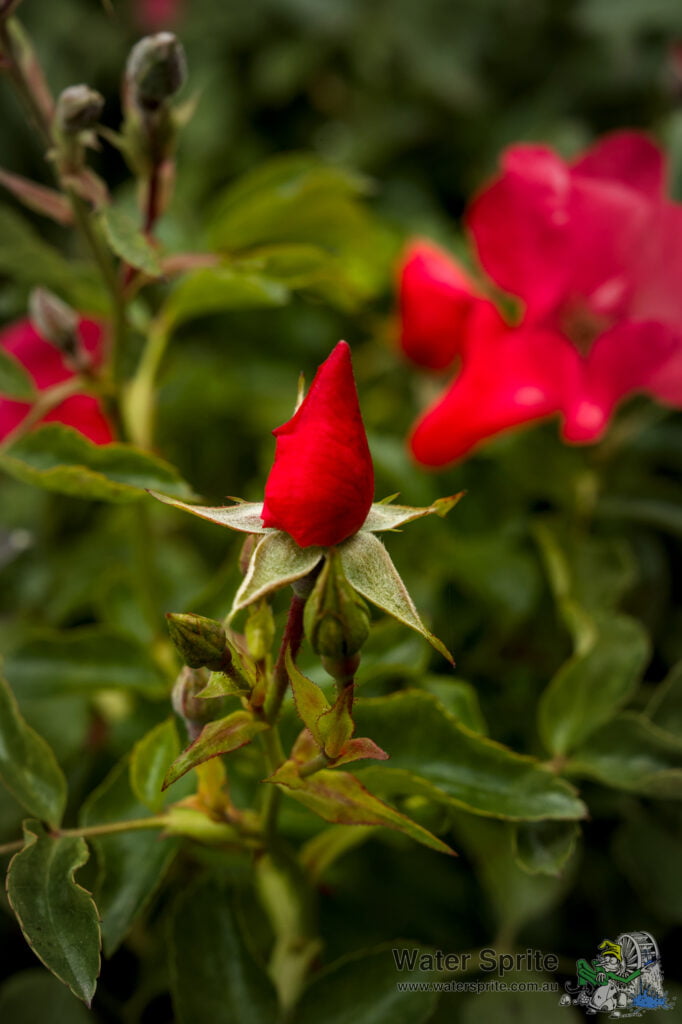
Chudleigh calls itself the “village of roses”, in honour of the several large plantings of various varieties of roses in the main street. After afternoon tea, I wandered down the street taking photos of the few flowers that were still out.



Disclaimer
We attended the establishments and locations mentioned in this post as full fee-paying guests. Our hosts were not advised that we are semi-professional photographers or bloggers before or during our visit. It is our understanding that the tours and information we received were as normally provided to any member of the public.
The views expressed in this post are mine and mine alone, and any errors in it are also all mine. Any recommendations made in this post are unpaid and are based entirely on my experiences during my visit. Your experience may differ, and I cannot be responsible for that.
Photography for personal use is permitted, but Tasmanian Parks and Wildlife Service do not permit commercial photography without a prior licence. The information presented in this post is an account of my travels and experience and is presented for information only. I do not hold a commercial photography licence from the Tasmanian Parks and Wildlife Service. The photographs from the Caves are not for sale or distribution.
Leave a Reply